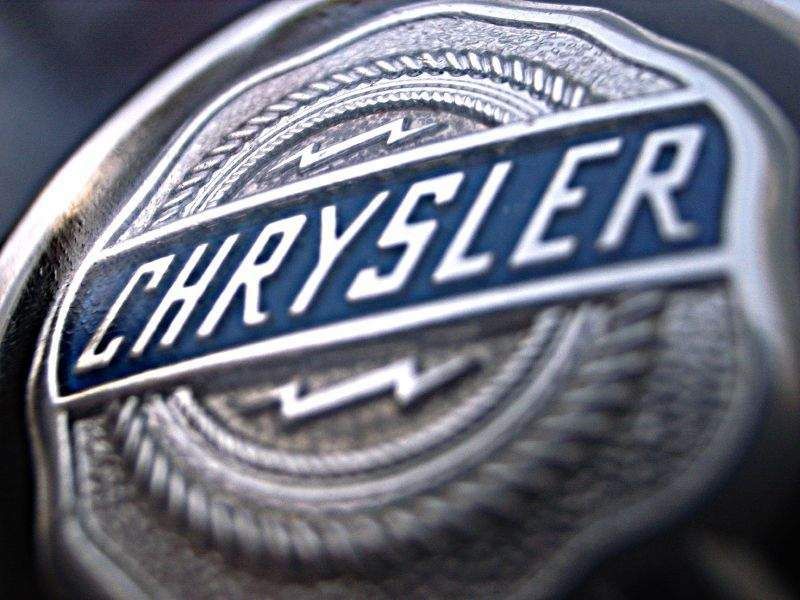Previously, we reported that both General Motors and Ford were attempting to get the United Auto Workers to take over their retiree health care obligations, in exchange for massive one-time payments in the multiple billions of dollars, but that it wasn’t clear whether Chrysler wanted a similar deal.
Apparently, Chrysler doesn’t.
The GM/Ford proposal, which is called a “VEBA,” for voluntary employee benefit association, would allow the automakers to cut substantially their ongoing labor costs. Alone, a VEBA wouldn’t close the gap between the labor costs of foreign nameplate manufacturers and the Detroit auto companies, but it would eliminate about $1500 per car of that cost disadvantage.
But not for Chrysler.
Last month, Al Iacobelli, the vice president of union relations at Chrysler, said that the company’s negotiations with the UAW would be “clearly focused on cash” and “hat will be a centerpoint of our discussions.” More recently, Chrysler spokesman Mike Aberlich was quoted as saying that “the general issue is health care, but we are looking at a variety of ways of getting it done.”
Chrysler’s new president, Robert Nardelli, has publicly stated that he merely will be implementing the reorganization plan created by his predecessor and does not contemplate significant cost-cutting moves beyond that plan. Many observers doubt that. Unless Chrysler’s new owners intended to do something more than already planned, there was no reason to hire Nardelli. The emphasis on “cash” in Chrysler’s negotiations with the UAW seems to contradict those statements.
Industry and stock market analysts believe that Chrysler simply can’t afford to fund a VEBA. According to Bloomberg.com, Chrysler has approximately $19 billion in retiree health care obligations. At 60¢ on the dollar, the middle figure apparently being discussed for funding a VEBA by GM and Ford, Chrysler would have to come up with a lump sum of about $11.4 billion.
Chrysler doesn’t have it. $11.4 billion is about two-fifths of the money injected into Chrysler (excluding Chrysler Financial) by Cerberus in the buy-out. Chrysler needs that money to develop new products and sustain itself until it has them in showrooms.
Chrysler can’t get it, either. Chrysler’s credit is maxed out – investment banks are still holding $12 billion of its buy-out debt which they have been unable to place with private investors. Chrysler cannot borrow more money.
This means Chrysler’s only way to cut labor costs is exacting from the UAW a lower pay scale or lower health and retirement benefits or both. But, Chrysler does not appear to have anything worth while to offer to the union in exchange. Further, the extent of debt taken on by Chrysler to fund the buy-out pretty much guarantees that the investment bank bond holders would prevent bankruptcy in any form, because that would destroy the value of the debt short-term.
Moreover, if they believe there is any chance the union will agree to significant wage and benefit cuts at Chrysler, there is little chance that GM and Ford will settle with the union on better terms. There is no reason for GM and Ford to pump out multiple billions of dollars funding a VEBA if the UAW is going to give Chrysler a break that requires zero front money.
Many “experts” have assumed UAW negotiations with the automakers would be cooperative, since all parties are in the same sinking boat. It has also been assumed that Chrysler could ride on the coattails of GM and Ford, taking the same deal they reach.
More and more, it looks like it won’t play out that way.
But for the Chrysler factor, there does appear to be every reason to believe that GM, Ford and the UAW would to arrive at an agreement which, while not closing the cost gap with foreign nameplate producers, will substantially reduce it. The deal would fund the VEBA, give the companies more flexibility in job rules and some concessions in current health care costs. The union, however, would basically preserve the current pay scale.
Chrysler’s approach may throw a monkey wrench into that scenario.
In the end, though, the UAW will not agree to the type and extent of wage and benefit cuts which Chrysler apparently wants. Apart from the impact this would have on negotiations with GM and Ford, it would never sell to the membership. Moreover, Chrysler’s investment bankers, who are stuck with $12 billion of the buy-out debt which they want to sell, won’t tolerate a strike because it would make the debt unsaleable.
We already know that Cerberus miscalculated in its offer to buy Chrysler: it expected to sell the debt to finance it without difficulty and at lower prices than it ultimately cost. It is now becoming increasingly clear that the investment was predicated on the idea that Cerberus could cut costs at Chrysler substantially in the short-term.
In the end, the VEBA proposal may turn out to be the factor that Cerberus didn’t adequately consider. At the time of the buy-out, John Snow, the head man at Cerberus, said that if they needed more money to make Chrysler a going proposition, they’d go out and get it. They may have figured they’d borrow to fund a VEBA, if that’s what it took. If so, the collapse of the equity markets since the deal was struck has eliminated that possibility.
Chrysler is now in much more trouble than it was before Cerberus bought it. As part of DaimlerChrysler, it could easily have borrowed enough to fund a VEBA. Now, it can’t. As part of DaimlerChrysler, it likely could have lived with the same contract reached with GM and Ford. Now, it can’t.
Daimler essentially gave Chrysler to Cerberus in exchange for it’s assumption of all health care and pension liabilities.
It is looking, more and more, like Daimler got a hell of a deal.

